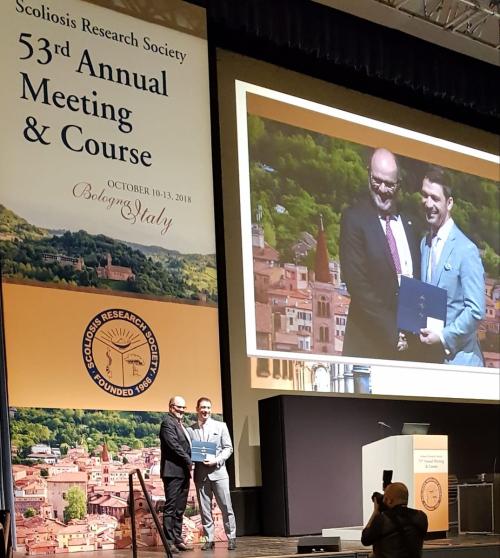Scoliosis: SEAS exercises work
The Scientific Exercises Approach to Scoliosis (SEAS) is a method that, by reducing the risk of scoliosis worsening, also reduces the likelihood of a patient eventually needing a brace. What is more, SEAS exercises of the kind developed by Isico (Italian Scientific Spine Institute) give better results than other exercise plans.
Take the case of Giorgia, a 15-year-old girl with a 15° scoliotic curve discovered three years ago. Thanks to regular therapy based on SEAS exercises learned at Isico, her condition has remained stable. This has reduced her risk of needing to wear a brace and of experiencing progression of her curve in adulthood.
Giorgia’s positive outcome is one of the many considered in a study conducted by Isico researchers and recently published in the Annals of Physical and Rehabilitation Medicine. Entitled “Specific exercises reduce the need for bracing in adolescents with idiopathic scoliosis: a practical clinical trial”, the research confirmed the efficacy of physiotherapeutic scoliosis-specific exercises in adolescents. According to Prof. Stefano Negrini, scientific director of Isico, “this study, which considers the case studies of 327 patients over 10 years of clinical practice, is the most extensive conducted to date. It is not an experimental study, but the daily reality of these patients provided confirmation of what has previously been observed”.
It can also be considered a fundamental study because it is one of the few in the field of vertebral pathology to have verified factors that reduce the risk of scoliosis worsening. In addition to demonstrating the effectiveness of specific exercises, compared with doing nothing, it also shows those who undertake a therapeutic exercise plan, like the one developed at Isico, have better results than those who do normal exercises twice weekly in the gym.
“We evaluated patients with curves of between 11 and 20 degrees”, explains Dr Michele Romano, technical director of Isico. “The treatment was deemed to have failed if patients needed to start wearing a brace or if their curve worsened to a Cobb angle of more than 30 degrees, because this is the threshold beyond which the risk of negative consequences in adulthood increases”.
This research also emphasises the importance, with this approach, of consistency: the patients who practiced the therapy continuously (without interruption), right through to the end, showed visibly better results than those who did not.
“In fact, the risk of having to wear a brace increases threefold for those who do not do their exercises”, remarks Prof. Negrini. “Another very satisfying result of the study, highlighting the value of the work we do in our institute, was the ‘number needed to treat’. This expression means the number of patients needing to be treated with a particular procedure [in this case the specific exercise therapy] before one of them benefits from the treatment. Compared with the usual average of 8–9 patients, in Isico three patients are sufficient. This shows that treatment with specific exercises greatly reduces the risk of needing a brace or having to resort to surgery”.



Leave a Reply
Want to join the discussion?Feel free to contribute!